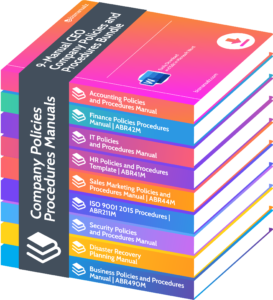What Should a CEO Know About Corporate Performance Management?

As a CEO, you have a lot on your plate. With so much responsibility, it can be overwhelming to keep track of your organization’s performance. That’s why understanding the ins and outs of CEO Corporate Performance Management (CPM) is crucial for your success. In this article, we’ll discuss the importance of CPM and how it can help address the challenges that CEOs face in managing their company’s performance. Let’s dive in and explore this critical topic together. What should a CEO know about corporate performance management?
What Is CEO Corporate Performance Management?

CEO Policies and Procedure
CEO Corporate Performance Management (CPM) is a process that involves setting goals, measuring performance, and monitoring progress towards achieving organizational objectives. It encompasses various activities such as strategic planning, budgeting, forecasting, and reporting.
CPM provides valuable insights into the overall performance of a company, enabling CEOs to make informed decisions and take corrective actions when needed. By implementing effective CPM strategies, CEOs can ensure that their organizations stay on track and continually improve their performance.
The concept of CPM emerged in the 1990s as a response to the growing need for better performance measurement and management in organizations. As businesses became more complex, traditional financial measures were no longer sufficient to evaluate overall performance.
However, with the integration of technology and data analytics, CPM has evolved into a crucial tool for CEOs in today’s competitive business landscape.
Why Is CPM Important for a CEO?
Understanding the importance of Corporate Performance Management (CPM) is crucial for a CEO to effectively lead their organization and drive success. CPM provides valuable insights into key performance indicators, financial metrics, and overall business performance, enabling CEOs to make data-driven decisions and identify areas for improvement.
By aligning strategic goals with operational outcomes, CPM helps CEOs monitor progress, track performance trends, and ensure accountability across the organization. Ultimately, CPM empowers CEOs to optimize performance, enhance profitability, and achieve long-term growth.
A prime example of this is a large manufacturing company where the CEO implemented a CPM system and saw remarkable improvements in business performance. By closely monitoring key performance indicators, they were able to identify and address bottlenecks in their supply chain, resulting in streamlined operations, reduced costs, and improved customer satisfaction.
The proactive use of CPM by the CEO played a crucial role in driving operational efficiencies and steering the company towards exponential growth.
What Are the Benefits of Implementing CPM?
Implementing Corporate Performance Management (CPM) offers several benefits for organizations.
- Improved decision-making: CPM provides data-driven insights, enabling CEOs to make informed decisions based on accurate and up-to-date information.
- Enhanced performance monitoring: CPM allows CEOs to track key performance indicators (KPIs) and monitor progress towards strategic goals, facilitating proactive adjustments if necessary.
- Increased accountability: With CPM, responsibilities and targets are clearly defined, promoting accountability and ensuring that everyone is aligned towards achieving organizational objectives.
- Efficient resource allocation: CPM helps CEOs allocate resources effectively by identifying areas of inefficiency and redirecting resources to high-performing areas.
- Better communication and collaboration: CPM promotes transparency and collaboration across teams, fostering a culture of continuous improvement and innovation.
By implementing CPM, CEOs can drive organizational success by aligning strategies, measuring performance, and making data-driven decisions.
What Are the Risks of Not Implementing CPM?
Not implementing Corporate Performance Management (CPM) can lead to several risks for a CEO and their organization. These risks include:
- Lack of clarity: Without CPM, it becomes challenging to define and communicate clear goals and performance expectations.
- Inefficient decision-making: Without proper monitoring and analysis of performance data, CEOs may make uninformed decisions that impact the overall success of the organization.
- Missed opportunities: A lack of CPM can result in missed opportunities for improvement and growth due to the inability to identify and address performance gaps.
- Lack of accountability: Without CPM, it’s difficult to hold employees accountable for their performance, which can affect overall productivity and morale.
- Ineffective resource allocation: Without CPM, CEOs may struggle to allocate resources effectively, leading to wasted time, money, and effort.
What Are the Key Components of CPM?
Corporate performance management (CPM) is a crucial aspect for any successful CEO to understand. It involves the processes and tools used to track, analyze, and improve a company’s performance.
In this section, we will discuss the key components of CPM, including goal setting and planning, monitoring and measuring performance, analysis and reporting, and how these contribute to decision making and action planning. By understanding these components, CEOs can effectively implement and utilize CPM to drive their company towards success.
1. Goal Setting and Planning
Goal setting and planning play a vital role in corporate performance management (CPM). To effectively set and achieve goals, CEOs can follow these steps:
- Clearly define specific objectives for the organization.
- Break down the goals into smaller, attainable targets.
- Allocate resources and establish timelines for each goal.
- Involve key stakeholders in the goal-setting process to ensure buy-in and alignment.
- Regularly review and update goals based on changing circumstances or market conditions.
True story: A CEO of a software company implemented goal setting and planning as part of their CPM strategy. By clearly defining objectives and involving their team in the process, they were able to increase productivity and achieve record-breaking sales. The strategic planning allowed them to identify new market opportunities and effectively allocate resources, resulting in significant growth for the organization.
2. Monitoring and Measuring Performance
Monitoring and measuring performance is essential in corporate performance management for CEOs. It offers valuable insights into organizational progress and assists in identifying areas for improvement. To effectively monitor and measure performance, CEOs should follow these steps:
- Establish performance metrics: Define key performance indicators (KPIs) that align with the organization’s goals and objectives.
- Implement data collection systems: Set up mechanisms to collect relevant data and performance metrics.
- Regularly analyze data: Review performance data to track progress, identify trends, and evaluate performance against targets.
- Communicate findings: Share performance insights with relevant stakeholders to promote transparency and alignment.
- Take corrective actions: Utilize performance data to identify areas for improvement and create action plans to address any deficiencies.
- Continuously monitor: Regularly assess performance to ensure progress is being made and adjust strategies as necessary.
Through effective monitoring and measuring of performance, CEOs can drive organizational success and make informed decisions for long-term growth.
3. Analysis and Reporting
Effective analysis and reporting are crucial components of corporate performance management (CPM) for CEOs. Here are the key steps to follow:
- Collect relevant data: Gather data from various sources, including financial reports, customer feedback, and employee performance metrics.
- Analyze the data: Use statistical and analytical tools to identify trends, patterns, and insights that can inform decision-making.
- Prepare reports: Present the findings in clear and concise reports, highlighting key performance indicators and benchmarks related to analysis and reporting.
- Share the reports: Distribute the reports to relevant stakeholders, such as department heads, executives, and board members.
- Facilitate discussions: Initiate discussions based on the reports, encouraging collaboration and feedback from stakeholders.
- Take action: Use the insights gained from the analysis and reporting to make informed decisions and develop action plans for improvement.
Pro-tip: Regularly review and update your analysis and reporting processes to ensure they align with changing organizational goals and priorities.
4. Decision Making and Action Planning
To effectively implement corporate performance management (CPM), CEOs need to focus on decision making and action planning. Here are some steps they can take:
- Identify key performance indicators (KPIs) relevant to their organization’s goals and objectives.
- Establish a performance management system that tracks and measures progress towards those KPIs.
- Communicate and align goals with employees, ensuring everyone understands their roles in achieving the desired outcomes.
- Continuously monitor and adjust performance based on the insights gained from the performance management system and make informed decisions and develop actionable plans to drive their organization’s success.
By following these steps, CEOs can improve their decision-making processes and develop effective action plans to drive their organization’s success. It is essential for CEOs to regularly evaluate their decision-making processes and adjust their plans accordingly to ensure continuous improvement and adaptability in today’s dynamic business environment.
How Can a CEO Implement CPM in their Organization?
As a CEO, implementing a corporate performance management (CPM) system in your organization can greatly enhance your company’s success. In this section, we will discuss the key steps to effectively implementing CPM. First, it is essential to identify the key performance indicators (KPIs) that will drive your company towards its goals.
Then, we will explore how to establish a performance management system that will allow for tracking and evaluating these KPIs. We will also discuss the importance of communicating and aligning goals with employees, as well as continuously monitoring and adjusting performance to ensure ongoing success.
1. Identify Key Performance Indicators
Identifying Key Performance Indicators (KPIs) is crucial for effective corporate performance management. Here are the steps to guide CEOs in this process:
- Define organizational goals and objectives.
- Align KPIs with strategic objectives.
- Consider both financial and non-financial metrics.
- Identify KPIs that are measurable, relevant, and aligned with business priorities.
- Gather data and establish benchmarks.
- Select KPIs that provide actionable insights.
- Regularly review and update KPIs to ensure their effectiveness.
By identifying the right KPIs, CEOs can monitor performance, make data-driven decisions, and drive organizational success.
Suggestions:
- Involve key stakeholders in the process to ensure alignment.
- Consider using technology solutions for easier KPI tracking and reporting.
- Provide training and support to employees to enhance their understanding of KPIs.
2. Establish a Performance Management System
To establish a performance management system, CEOs should follow these steps:
- Define organizational objectives: Clearly articulate the company’s goals and expectations.
- Identify key performance indicators (KPIs): Determine the metrics that will measure progress towards the objectives.
- Develop performance measures: Create specific, measurable targets for each KPI.
- Implement data collection and tracking processes: Establish systems to collect and analyze relevant data.
- Set performance targets: Set realistic targets for each KPI based on industry benchmarks and internal goals.
- Monitor and evaluate performance: Regularly review performance against targets and provide feedback to employees.
- Provide training and support: Equip employees with the necessary skills and resources to achieve their targets.
- Recognize and reward high performance: Acknowledge and incentivize employees who consistently meet or exceed their targets.
By implementing a performance management system, CEOs can ensure alignment, accountability, and continuous improvement throughout their organization.
3. Communicate and Align Goals with Employees
Effective communication and goal alignment with employees are crucial for the successful implementation of Corporate Performance Management (CPM) by a CEO.
- Clearly define organizational goals and objectives.
- Engage employees in the goal-setting process to ensure their buy-in and commitment.
- Communicate the goals and expectations clearly to all employees and ensure they are aligned with the company’s overall vision.
- Align individual employee goals with the organization’s objectives.
- Provide regular feedback and updates on progress towards goals to keep employees informed and motivated.
- Encourage open communication and collaboration among employees to foster alignment and teamwork.
- Recognize and reward employees who contribute to goal attainment to show appreciation and incentivize desired behaviors.
- Regularly review and adjust goals as needed based on performance and changing business needs to ensure continued progress and success.
4. Continuously Monitor and Adjust Performance
Continuously monitoring and adjusting performance is essential for successful corporate performance management. To implement this process effectively, follow these steps:
- Establish performance metrics and key performance indicators (KPIs) to measure progress.
- Regularly collect and analyze data to track performance against targets and identify areas for improvement.
- Communicate performance results to relevant stakeholders, such as executives and employees.
- Hold regular performance review meetings to discuss progress, address challenges, and set action plans.
- Encourage a culture of continuous improvement by providing feedback, training, and resources for employees.
- Adjust goals and strategies based on performance insights to align with changing business needs.
- Implement performance management tools and software to streamline data collection and analysis.
By following these steps, CEOs can ensure that their organization’s performance remains on track and continuously improves over time.
CEO Corporate Performance Management
Setting goals, evaluating performance, and tracking advancement toward accomplishing organizational objectives are all part of the process known as corporate performance management, or CPM. It includes a range of tasks like forecasting, reporting, budgeting, and strategic planning.
CPM provides CEOs insightful information about the overall performance of their company, empowering them to make decisions and, if necessary, take corrective action. CEOs can guarantee that their organizations stay on course and continuously enhance their performance by putting into practice efficient CPM strategies.
Frequently Asked Questions

What is Corporate Performance Management (CPM)?
CPM is a systematic, data-driven approach to managing an organization’s performance and achieving its strategic goals. It involves tracking key performance indicators (KPIs), analyzing data, and making informed decisions to improve overall organizational performance.
Why is CPM important for CEOs to know?
As the leader of an organization, CEOs need to have a deep understanding of their company’s performance in order to make strategic decisions and drive growth. CPM provides CEOs with the necessary tools and insights to monitor and improve performance.
What are the key components of CPM?
The key components of CPM include goal setting, data collection and analysis, performance monitoring, and decision-making. By setting clear goals, collecting and analyzing relevant data, and regularly monitoring performance, CEOs can make informed decisions to drive their organization forward.
How can CPM help CEOs improve decision-making?
CPM provides CEOs with real-time data and insights into various aspects of their organization’s performance. This allows them to identify areas for improvement and make data-driven decisions that align with the company’s goals and objectives.
What challenges should CEOs be aware of when implementing CPM?
Some challenges that CEOs may face when implementing CPM include data silos, resistance to change, and choosing the right performance metrics to track. It is important for CEOs to address these challenges and have a clear plan in place to ensure a successful CPM implementation.
What are the benefits of implementing CPM?
Implementing CPM can lead to numerous benefits for an organization, such as improved decision-making, increased efficiency and productivity, better alignment of goals and strategies, and a more competitive edge in the market. It also allows CEOs to have a more holistic view of their organization’s performance and make proactive changes to drive success.















Leave a Reply